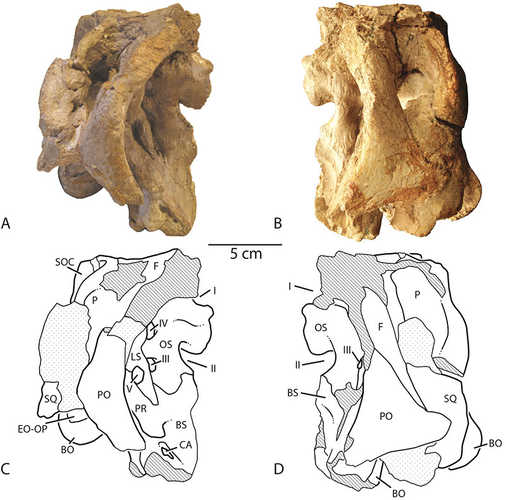Athenar
- Total Dino
- 2 days ago
- 3 min read
MEANING: Athenar
PERIOD: Late Jurassic
CONTINENT: North America
Athenar is a dicraeosaurid sauropod from the Late Jurassic period of what is now North America.

Abstract from paper: Carnegie Museum of Natural History houses some of the most important specimens for our understanding of diplodocoid sauropod cranial anatomy. One specimen (CM 26552), a braincase and partial skull roof, is often overlooked in favor of more complete skulls, but bears an outsized historical importance as this specimen formed the basis for the modern description of braincase anatomy for Diplodocus as a genus. In light of several decades of new discoveries since the original description by Berman and McIntosh in 1978, here we re-evaluate the anatomy and taxonomic relationships of this specimen. We find that CM 26552 is a distinct not only from Diplodocus but also from the larger grouping Diplodocidae entirely, and is instead best regarded as a new genus of dicraeosaurid sauropod.
Athenar is from the Late Jurassic. The Late Jurassic was a dynamic period, spanning from about 162 to 143 million years ago. The continents were continuing to drift apart, and the supercontinent Pangaea had fully split into Laurasia in the north and Gondwana in the south. This continental rearrangement led to the formation of large inland seas and shallow coastlines that fostered diverse ecosystems. The climate during the Late Jurassic was warm and humid, with lush forests of conifers and ferns that stretched across much of the continents, creating a rich ecosystem where dinosaurs flourished the dominant land animals.
Dinosaurs continued to diversify through the Late Jurassic, with some of the most famous species evolving in this time. Many well-known sauropods, such as Brachiosaurus and Apatosaurus roamed the land, exhibiting niche partitioning with their selectively distinct neck positions. Alongside them, stegosaurs became widespread, their plates and spikes making them one of the era's most recognizable groups. Theropods like Allosaurus and Ceratosaurus were the apex predators, evolving large, powerful bodies and sharp teeth that allowed them to hunt the gigantic herbivores. The early evolution of birds was taking place, setting the stage for the numerous species that would fill the skies in the eras to come.
Unlike the dramatic mass extinctions that marked the beginning and end of the Mesozoic, the Jurassic Period ended without a sharp boundary. As the continents continued to drift, ecosystems gradually transformed into unique habitats that supported the more specialized dinosaur species of the Cretaceous.

Athenar is a dicraeosaur. Dicraeosauridae was a group of sauropod dinosaurs known for their relatively short necks, tall neural spines, and more compact body plans compared to their longer-necked relatives. They lived primarily during the Late Jurassic and Early Cretaceous and are part of the larger diplodocoid lineage, though they are quite distinct from the more elongated forms that group is famous for. Instead of long, sweeping necks used to browse high vegetation, dicraeosaurs had stiff necks supported by tall vertebral spines, which may have helped them feed closer to the ground or at mid-level heights.
Members of this group are sometimes known for their elongated, paired spines running down their necks. These may have supported a sail or been used for display or defense. Dicraeosaurids are mainly known from Gondwana, suggesting they had a southern hemisphere distribution during a time when continental drift was breaking apart Pangea. Their smaller size and unique feeding strategies hint at ecological niches different from those of their more massive, high-browsing cousins, showing just how diverse and adaptable sauropods could be.











